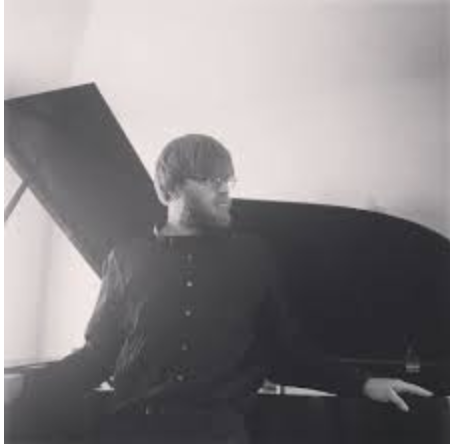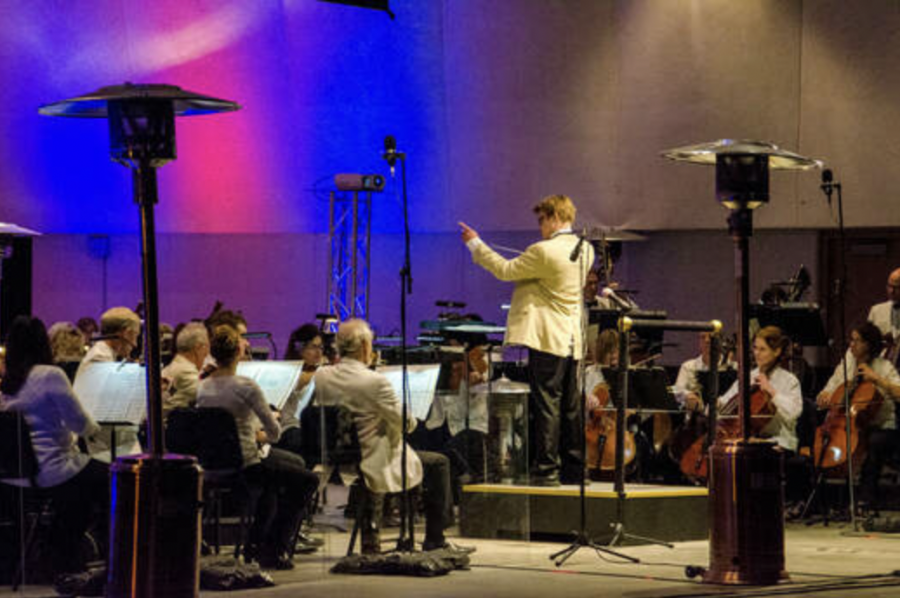Composer Colin Martin ’11
Combining Captivating Characteristics from Contrasting Eras
He takes lyrical melodies and artistically integrates intermittent dissonance. He’s written several wonderful pieces, including two piano sonatas and several études. His first symphony, an enthralling work, was commissioned and premiered by the New Mexico Philharmonic in 2019. Meet Colin Martin ‘11, a talented composer and performer.
I was fortunate enough to interview Martin a few weeks ago. In this interview, we discussed his background, composition strategies, pieces, and musical influence. Martin began by saying that his interests and aspirations “changed a lot” in his youth. At first, he enjoyed dinosaurs and paleontology, and then took an interest in creative writing. Martin was only exposed to the art of musical composition when he was at Albuquerque Academy as a sixth-grader.
According to Martin, his final assignment for his sixth-grade music class was to write a short composition. His piano piece was so exceptional that his teacher entered it into the “Hey, Mozart!” composition competition, and he was one of the winners. This was perhaps the first sign of his natural compositional flair. However, Martin only really got into music when he attended a concert in which an orchestra performed Modest Mussorgsky’s “Pictures at an Exhibition” suite. Martin describes this as a “kind of watershed, earth-shattering moment” because he started taking music more seriously after attending this concert: he began to practice piano more often and also composed a few pieces. In high school, Martin says that he was really attracted to Romantic-period composers, such as Frédéric Chopin, Franz Liszt, Sergei Rachmaninoff, and Peter Il’yich Tchaikovsky. However, while completing his Bachelor of Arts in Music, he became interested in more modern 20th Century composers, including Dmitri Shostakovich, Sergei Prokofiev, Béla Bartók, and Igor Stravinsky. He said that picking his favorite composer is “an impossible question to answer,” because Martin takes influential ideas and inspiration from so many different composers when writing music.
Symphony No. 1
We then discussed Martin’s sublime first symphony. This symphony was commissioned by Roberto Minczuk and the New Mexico Philharmonic in order to commemorate the centennial of Leonard Bernstein. Surprisingly, Martin said that he wouldn’t put Bernstein on his list of composers who have inspired him in his composing. Because of this, writing a symphony in honor of Bernstein was both a challenging and interesting project for Martin. First, he spent a lot of his time listening to compositions by Bernstein such as “Westside Story,” “Candide,” “Mass,” and “On the Waterfront.” After listening to all of his music, Martin realized that Bernstein likes to make his music quite accessible yet very modernistic. At first, Bernstein’s music sounds quite genial, yet there is a good deal of “dissonance with taste” underneath the fun. Bernstein especially likes to add interesting 20th-Century harmonies that were uncommon in the music of earlier composers. For example, there are a lot of tritones in Bernstein’s “Maria” dance (a tritone – which is a certain musical interval – is in the guitar riff at the beginning of Uptown Funk). When Martin was writing the third movement of the symphony, he tried to use as many tritones as he possibly could and, in doing so, created a very interesting melody. Also, in the fourth and final movement of the symphony, Martin used the theme from the “Candide” overture and inverted it in order to create a playful character that was similar to Berstein’s music. When writing this piece, he had to compose music for a whole orchestra, including instruments that he doesn’t play often. If an instrument had a prominent role in his symphony and Martin didn’t play it, he listened to a lot of music written for that instrument in order to get an idea of the instrument’s tendencies. He sometimes even consulted with musicians to see if the music was playable. Finally, Martin noted that a lot of his compositional process (especially for this symphony) was about listening to music just as much as writing it.
Compositional Strategy
We then discussed how Martin composes his music and what his favorite musical elements are. He said that he will often compose in a linear fashion, starting from a melody, which he considers his niche, then adding the supporting elements such as harmony. Martin prefers using composition software like Sibelius to handwriting scores because his musical ideas come quite quickly; thus, he needs to write his melodies down speedily before they disappear. Although some uncanny modern songs don’t have melodies any more, Martin still likes to use the lyrical motifs of the Romantic era, saying that “I don’t feel the need to reinvent the wheel.” After he has an excellent melody and accompaniment, he likes to incorporate some more atonal elements to his music, such as dissonance and misplaced accents, to spice up his music. Martin stated that he didn’t like using dissonance when he was younger. But then he “dove into the deep end” and began incorporating it into his music; after doing this, he says that his music improved because it was richer. However, overusing dissonance results in plain cacophony, so Martin tries to use modest amounts of dissonance and atonality in his compositions – not too much, and not too little. He also occasionally experiments with scale variants such as octatonic or whole-tone scales, although he considers these “cliché” because they were overused in the 20th Century. Martin also likes to structure his music using certain forms – he prefers a “logical, reasonable composition strategy,” such as sonata form. However, despite using a strict musical structure for his compositions, Martin enjoys experimenting with unique meters like ⅞ (the time signature for the last movement of his first piano sonata). Also, one of his favorite compositional strategies is to synthesize musical characteristics from two periods on opposite ends of the musical spectrum: the “machine-like, robotic” 20th Century and the “live from the heart”- style 19th Century. Thus, Martin’s composing strategy mainly consists of three key elements: listening to a lot of music to train the inner ear, taking bold yet tasteful risks in music, and, most importantly, using a variety and balance of different musical elements in order to create a multifaceted composition.

Aside from music, Martin enjoys swimming, baseball, and football. He was the state champion in the 500-meter freestyle when he was a junior at the Academy. Martin is trilingual – he speaks English, Spanish, and Chinese – and loves dinosaurs (he was wearing a Jurassic Park shirt when I interviewed him). He said that he really enjoyed being in the band with Mr. Corbin at the Academy and that “being able to do percussion … has been a really invaluable part of my experience as a composer.”
Future Aspirations
Colin Martin also has ambitious plans for his future in his composition career. First, he has been commissioned to write another piece for the New Mexico Philharmonic in order to honor the late poet Karen McKinnon. This piece is expected to be premiered in February 2021 (I encourage you to attend the concert!), although Martin said that he is “not optimistic about it actually happening” as scheduled due to the pandemic. He was asked to arrange two poems by Ms. McKinnon into compositions for voice and orchestral accompaniment. He plans to use melodious textures for the sentimental first piece and a sorrowful mood for the second piece. Martin considers writing vocal music “both a blessing and a curse,” because the text of the music “determines everything … it determines your rhythm. It determines your melody. It determines your harmonies. It determines the mood [and] the character of the piece.” This can be useful because the piece “kind of writes itself for you” but it also limits the composer to a certain amount of melodic freedom and musicality. Besides writing this vocal piece, Martin is also planning to get a DMA (Doctor of Musical Arts) in music and perhaps become a professor at a music institution. Colin Martin will no doubt go on to become one of the most famous and influential musicians of the 21st Century.





